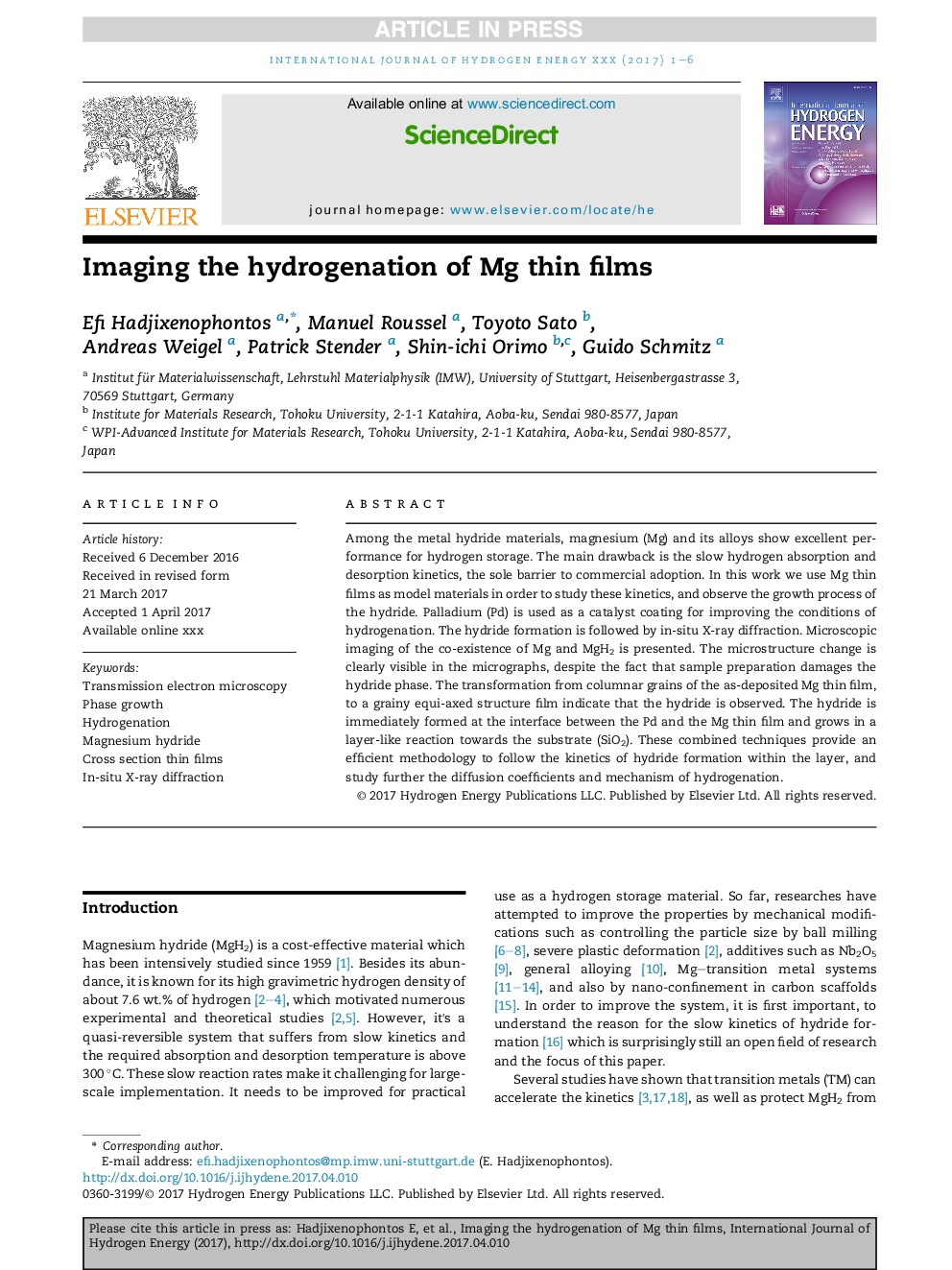| Article ID | Journal | Published Year | Pages | File Type |
|---|---|---|---|---|
| 5145471 | International Journal of Hydrogen Energy | 2017 | 6 Pages |
Abstract
Among the metal hydride materials, magnesium (Mg) and its alloys show excellent performance for hydrogen storage. The main drawback is the slow hydrogen absorption and desorption kinetics, the sole barrier to commercial adoption. In this work we use Mg thin films as model materials in order to study these kinetics, and observe the growth process of the hydride. Palladium (Pd) is used as a catalyst coating for improving the conditions of hydrogenation. The hydride formation is followed by in-situ X-ray diffraction. Microscopic imaging of the co-existence of Mg and MgH2 is presented. The microstructure change is clearly visible in the micrographs, despite the fact that sample preparation damages the hydride phase. The transformation from columnar grains of the as-deposited Mg thin film, to a grainy equi-axed structure film indicate that the hydride is observed. The hydride is immediately formed at the interface between the Pd and the Mg thin film and grows in a layer-like reaction towards the substrate (SiO2). These combined techniques provide an efficient methodology to follow the kinetics of hydride formation within the layer, and study further the diffusion coefficients and mechanism of hydrogenation.
Related Topics
Physical Sciences and Engineering
Chemistry
Electrochemistry
Authors
Efi Hadjixenophontos, Manuel Roussel, Toyoto Sato, Andreas Weigel, Patrick Stender, Shin-ichi Orimo, Guido Schmitz,
